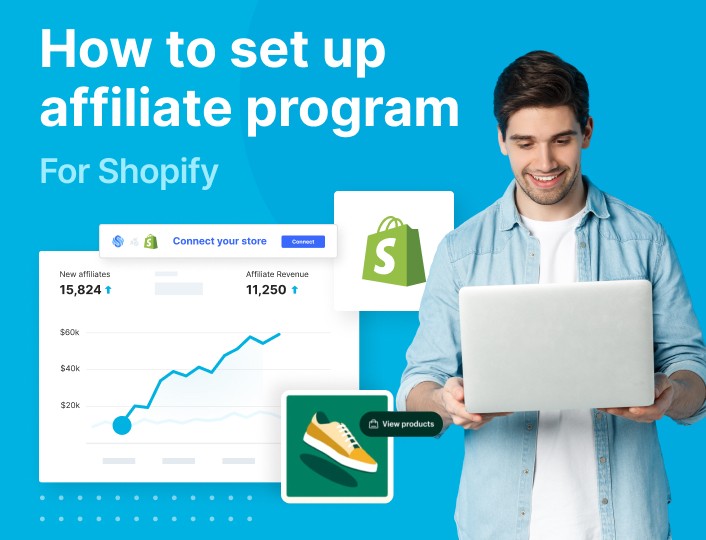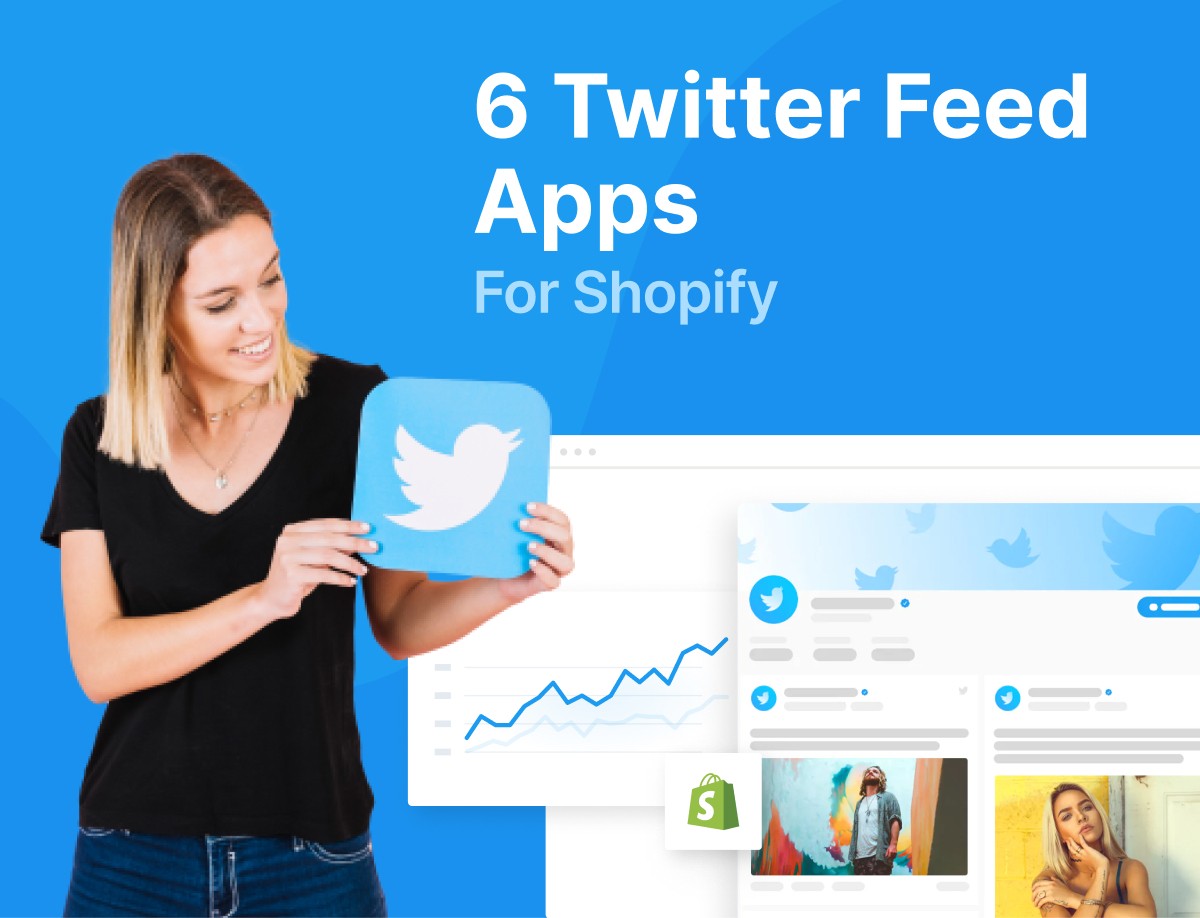Are you planning to start an affiliate program for your Shopify store? Wondering how to set it up and make it successful?
Statistics suggest that online businesses generate 15% to 30% of sales from affiliate marketing. So if you don’t have an affiliate program for your Shopify store yet, you’re missing out on a solid business avenue — one that helps increase brand awareness, brand credibility, and, of course, sales and revenue.
In this post, you will learn the tips and strategies for making the most out of affiliate marketing.
You will get to learn how to set up and successfully manage affiliate marketing programs for your Shopify store.
Let’s get started!
What Is Affiliate Marketing?
Affiliate marketing is a performance-based marketing program in which a business rewards affiliates (publishers, influencers, bloggers, etc.) for every sale they bring to the business. Typically, the reward is a percentage cut of the revenue.
Since it’s performance-based, businesses only pay affiliates after they get a successful sale. This helps to lessen risks and increase ROI.
How To Create An Affiliate Program For Your Shopify Store?
If you have a Shopify store, you already know that you need third-party Shopify apps to add any advanced functionality besides the core eCommerce features. Adding an affiliate program is no different — you’ll need a Shopify affiliate app to create an affiliate program for your Shopify store.
An affiliate app helps add features necessary to create and successfully run your affiliate program. The primary function of an affiliate app is to create & assign unique affiliate links/codes, track those links, and update the owner of the link and the business when a transaction happens through the link. Moreover, the right affiliate app gives the business an easy way to pay its affiliates and shows the KPIs on the dashboard.
There are many affiliate apps on the Shopify app store. Among the top ones is Social Snowball – the modern & up-to-date affiliate solution explicitly designed for Shopify.
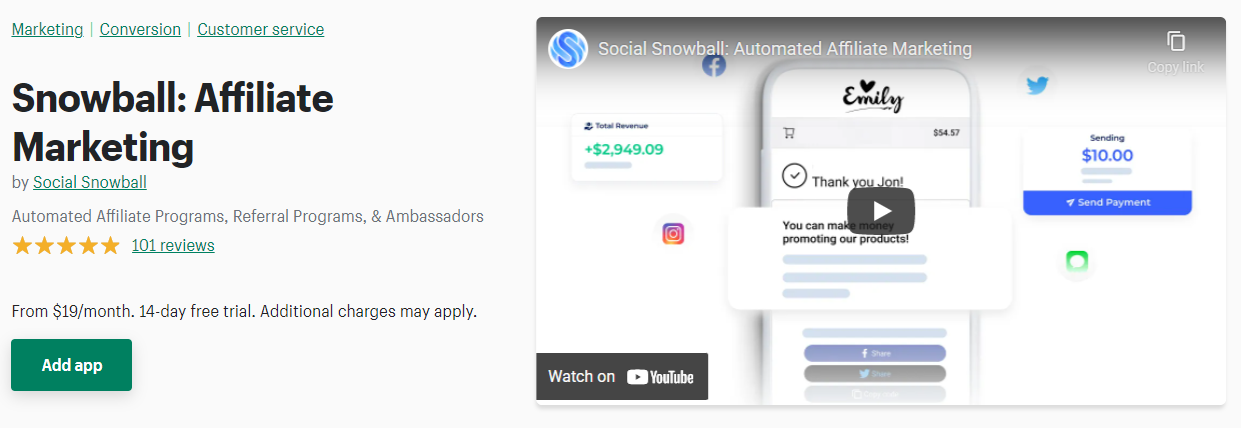
With the Snowball app, you can automatically convert your customers into affiliates and motivate them to refer a friend to your store right after their purchase. This feature has helped stores 2x-3x their affiliate revenue after shifting from other traditional affiliate platforms:
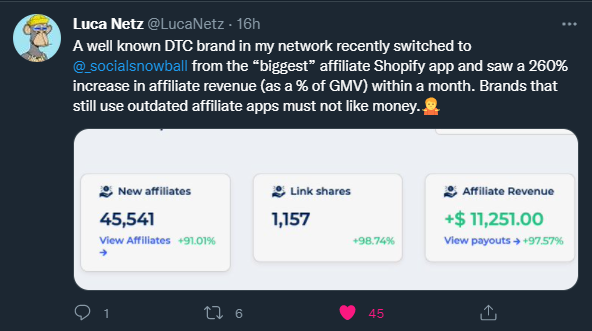
How To Set up an Affiliate Program on Shopify With Social Snowball
Setting up an affiliate program on Shopify with Social Snowball is easy; you just have to follow these steps:
Step 1: Connect Your Store.
To get started, you’ll need to connect your store with Social Snowball to get started. You can do it in two ways:
1. Go to socialsnowball.io/connect-store and add your Shopify store URL to start the 14-day free trial.
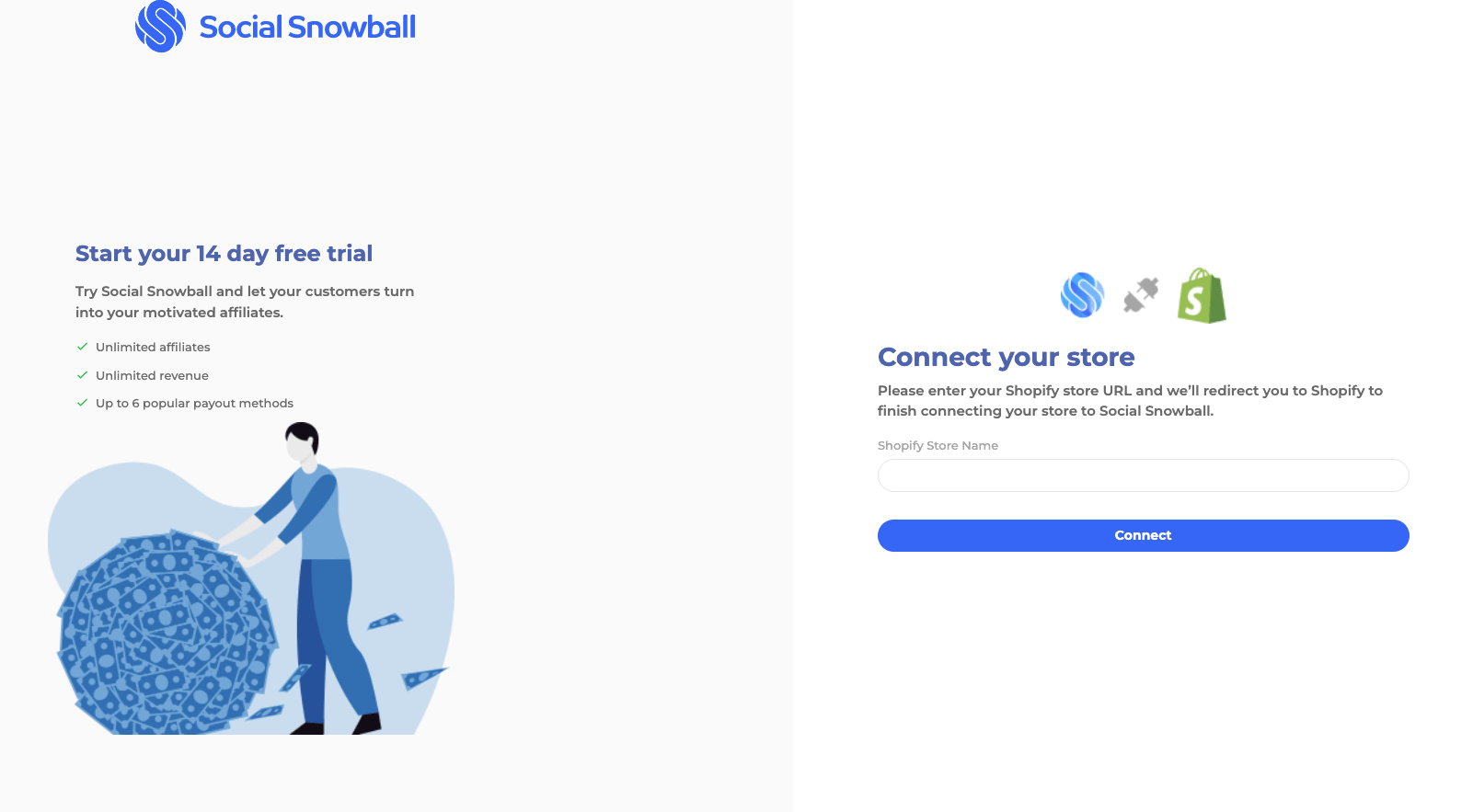
2. Or, go to our app store listing and click “Add App.”
Step 2: Login
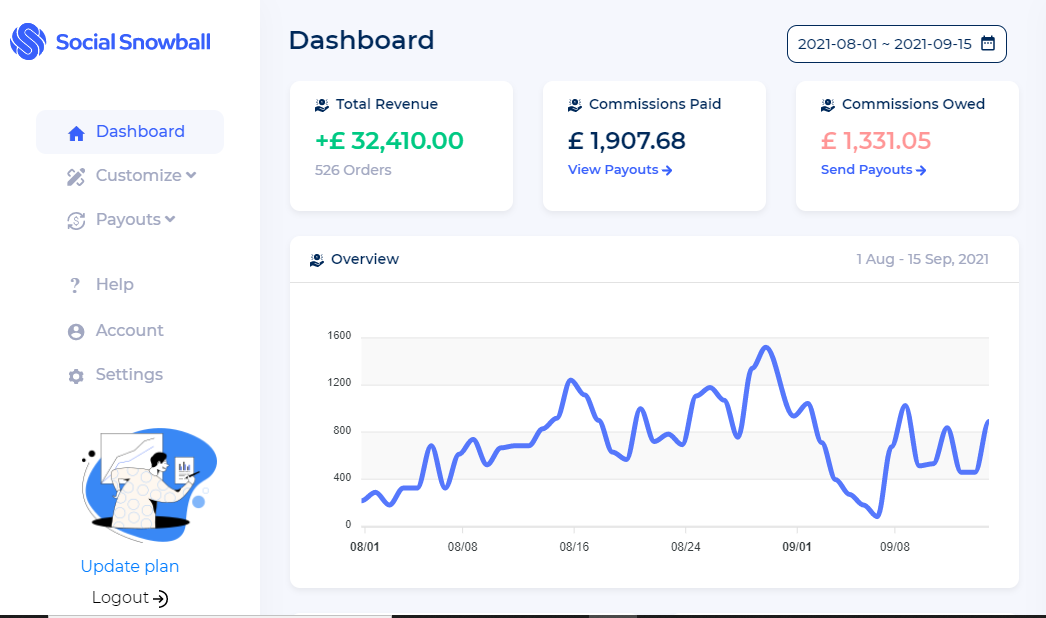
Once you sign-up successfully, log in to your Social Snowball account to access your customizable affiliate marketing dashboard. The dashboard will report on KPIs like total revenue, commissions paid, commissions owed, overview, etc. Of course, the data will populate only after you have affiliates and they bring sales.
Step 3: Set Commissions
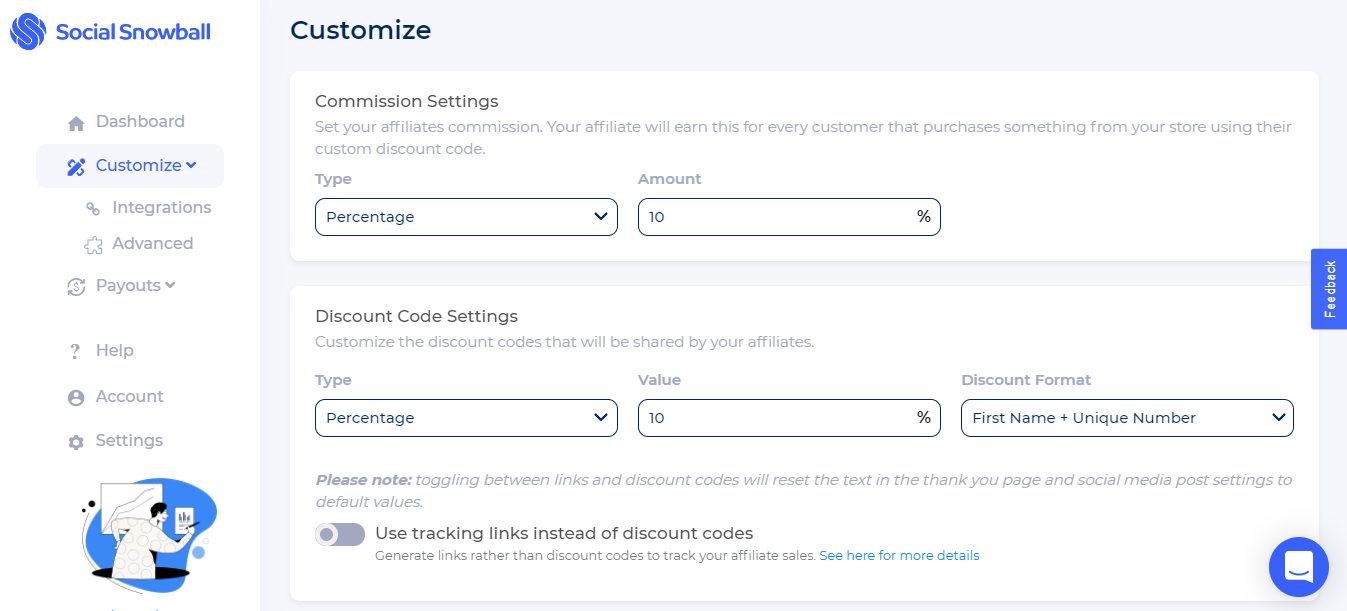
Use the ‘Customise’ section on the sidebar menu of the dashboard to add the commissions you’d like to give your affiliates for successful affiliate sales. You can also add a special discount for affiliates’ audiences to increase conversions.
You can choose to either use an affiliate link for tracking or custom discount codes (with affiliates’ names in the code).
Step 4: Integrations

Your affiliate marketing campaign is ready to process sales once you are done with these steps. However, if you want to supercharge your business, here are our various integrations you should consider.
- Start by creating a customized sign-up form using the open editor on the platform. You can embed this sign-up form wherever you want, like your affiliate marketing landing page – where you can invite publishers and influencers to sign-up for your program.
- To market your affiliate program, you can use a variety of integrations to automate different tasks. For example, use Klaviyo integration for email automation, Postscript integration for SMS automation, or Zapier to integrate your complete marketing stack. In each automation, you can select Social Snowball custom properties like the affiliate code and append in messages — say in your Klaviyo email campaign.

To set up commission payouts, you can choose from various payment integration options on the platform. Some of which allow you to pay affiliates in just two clicks.
Affiliate Marketing Best Practices
We recommend you follow these best practices during and/or after setting up your affiliate program to get all the benefits of affiliate marketing:
Set Competitive Commission Rates
Setting a commission rate that’s a win-win is a balanced act. You’ll not be able to attract or retain affiliates if you don’t get this right.
Generally, brands offer 10-20% of affiliate revenue to affiliates. However, depending on your niche, it can be higher or lower, so the best way to go about it is to see what your direct competitors are offering and set a competitive commission rate.
Also, don’t consider the likes of Amazon or Walmart when setting your affiliate commission rate. These are established businesses that aren’t looking to attract affiliates per se. They can get away with minuscule rates like the one you see below, whereas you can’t:
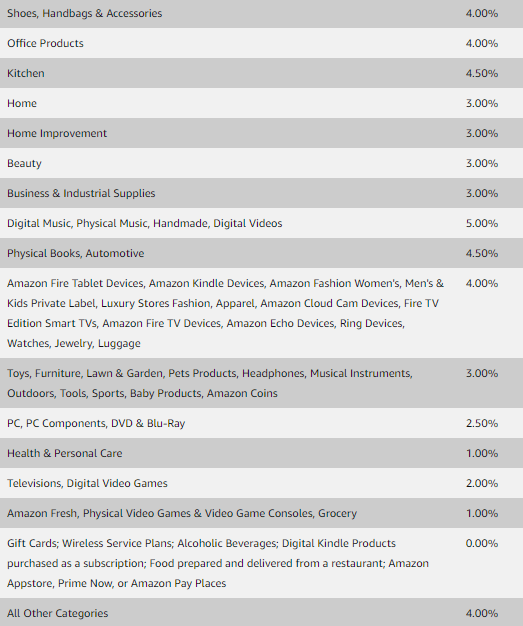
Be generous with your affiliate commissions to attract motivated marketers.
Also, you should experiment with the commission type. Percentage commission is the most common form. However, you can also offer fixed rates, depending on the industry and product type.
Recruit Right Affiliates
Affiliates are central to affiliate program success. So, try to recruit as many quality affiliates as possible. Here are a few things you can do:
Get Influencers in Your Niche:
80% of consumers reported buying products recommended by influencers. And many influencers are open to affiliate deals (i.e., performance-based deals) as part of their influencer fee negotiation. So, you should find relevant influencers and ask them to join your affiliate program.
Convert Customers Into Affiliates:
Social Snowbal can auto-convert your customers into affiliates. However, suppose you decide to go with other affiliate apps. In that case, you can reach out to existing customers via SMS, emails, or other channels and ask them to join you as an affiliate to earn commissions by referring your product to their friends and family.
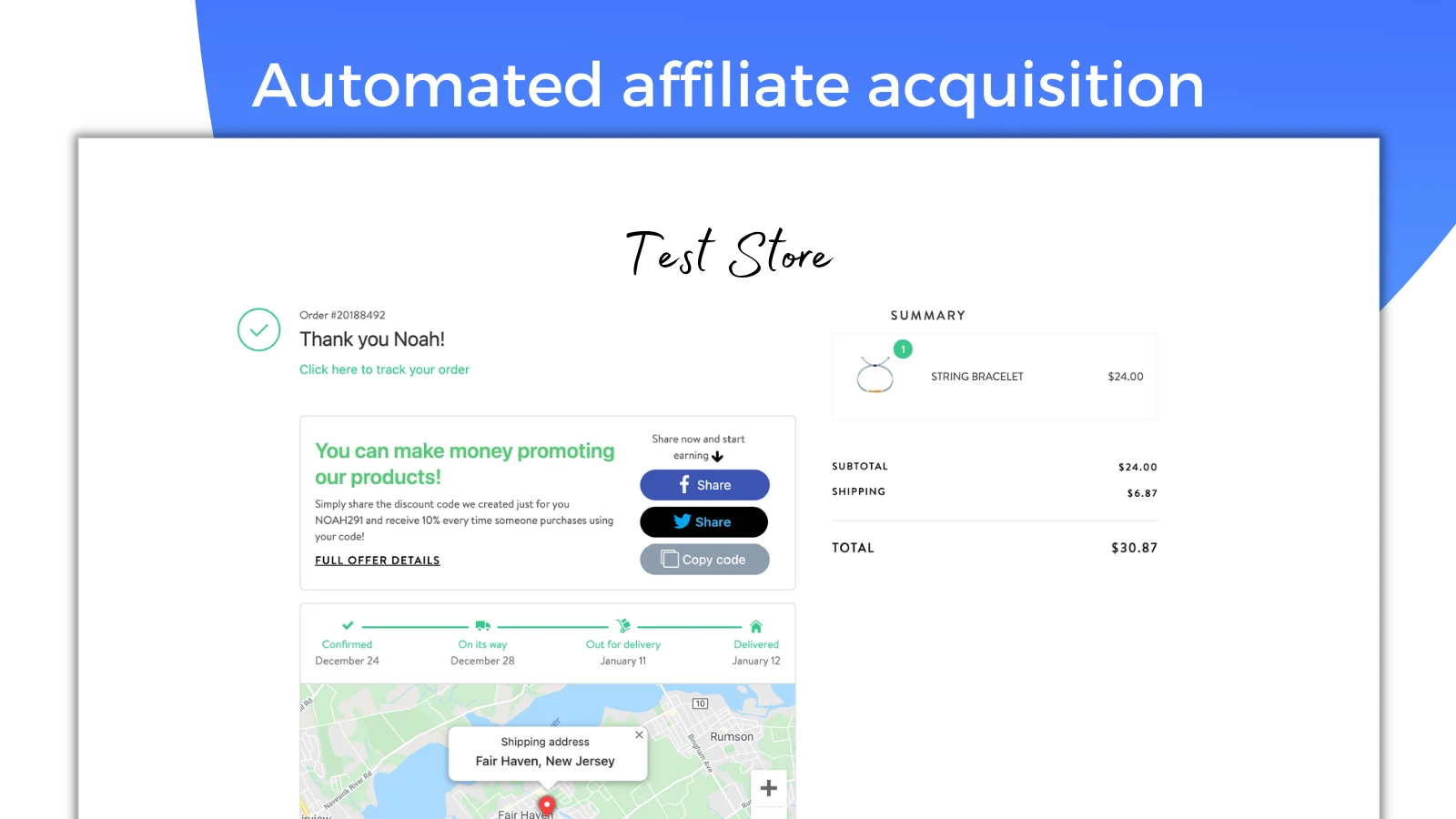
Promote in Online Communities:
People participate in groups on Facebook, LinkedIn, Reddit, etc., or act as a community on platforms like Twitter. Posting in relevant groups or collaborating with them will give you access to a wide pool of potential customers.
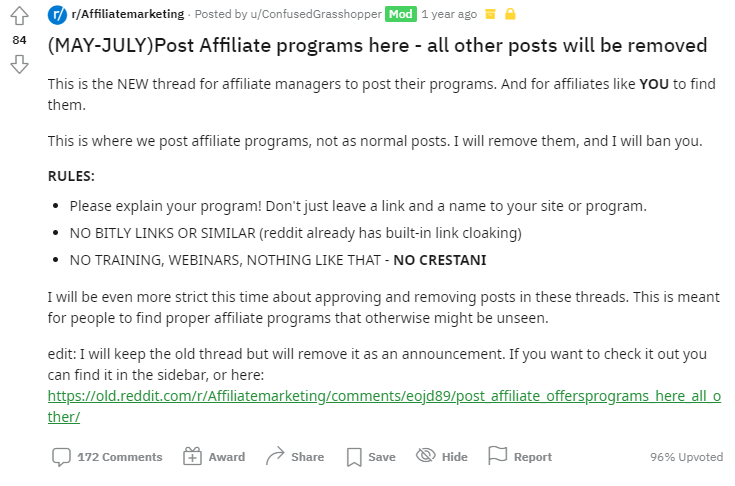
Send Cold Messages to Publishers
You’ll often see product reviews and recommendations posted by publishers/influencers on their websites or social media. Find these publishers, check if they fall under your product category niche, and send them cold emails to join your program.
For example, if you sell low carb dog food, you can search something like this and ask them if they’d like to review your product and feature you on their website:

Most of the ranking sites are potential affiliates.
Nurture and Motivate Your Affiliates
Even with affiliates joining your program, not all of them will give you the results you need. Some will become inactive and won’t bring you any sales. Therefore, you need to invest quality time & resources in nurturing relationships with your affiliates.
Here are some of the strategies you can use to motivate your affiliates:
- Dedicated Newsletter: Share tips & tricks, success stories, new offers, upcoming products, and bonuses with them. Seeing you care about affiliates will make them care about you.
- Create a marketing resource library: You can decrease the workload of your affiliates by providing them with marketing-ready banners, PDFs, social media posts, etc.
- Reward good performances: Nothing motivates affiliates more than monetary bonuses. So, reward top affiliates with better deals and commissions to keep them motivated. Similarly, offer an extra commission to unmotivated affiliates to motivate them to promote your brand.
SEMRush offers a limited-time welcome bonus option to motivate affiliates
- Pay on time: Fix a commission payout timeline and never miss a payment. Nothing frustrates an affiliate more than receiving their commissions late.
Track the Right KPIs
By this time, your affiliate marketing program should be operational with sales. Ensure you’re tracking the right KPIs to monitor sales, performances, and problem areas to keep growing your program.
Some of the KPIs you should be tracking are:
- Total affiliate revenue: To identify investment vs. results ratio.
- Top affiliates: You need to know who is bringing you the most sales, as these are the affiliates you’d want to retain at any cost.
- Revenue by each affiliate: To identify dips and rises in performances. Knowing this will help you reward good performances and nurture bad ones.
- Average order value: To measure the profitability of your affiliate program and of each affiliate. If you can study profitability, you will find it easy to determine what works and what needs fine-tuning.
Conclusion
Now that you’ve learned how to start and run an affiliate marketing program for your Shopify store, it’s time you start executing. Build your affiliate program, and grow! Good luck!
Are you still struggling to make sales for your Shopify store? Adoric can help. Sign up for a free account to start growing your sales.
